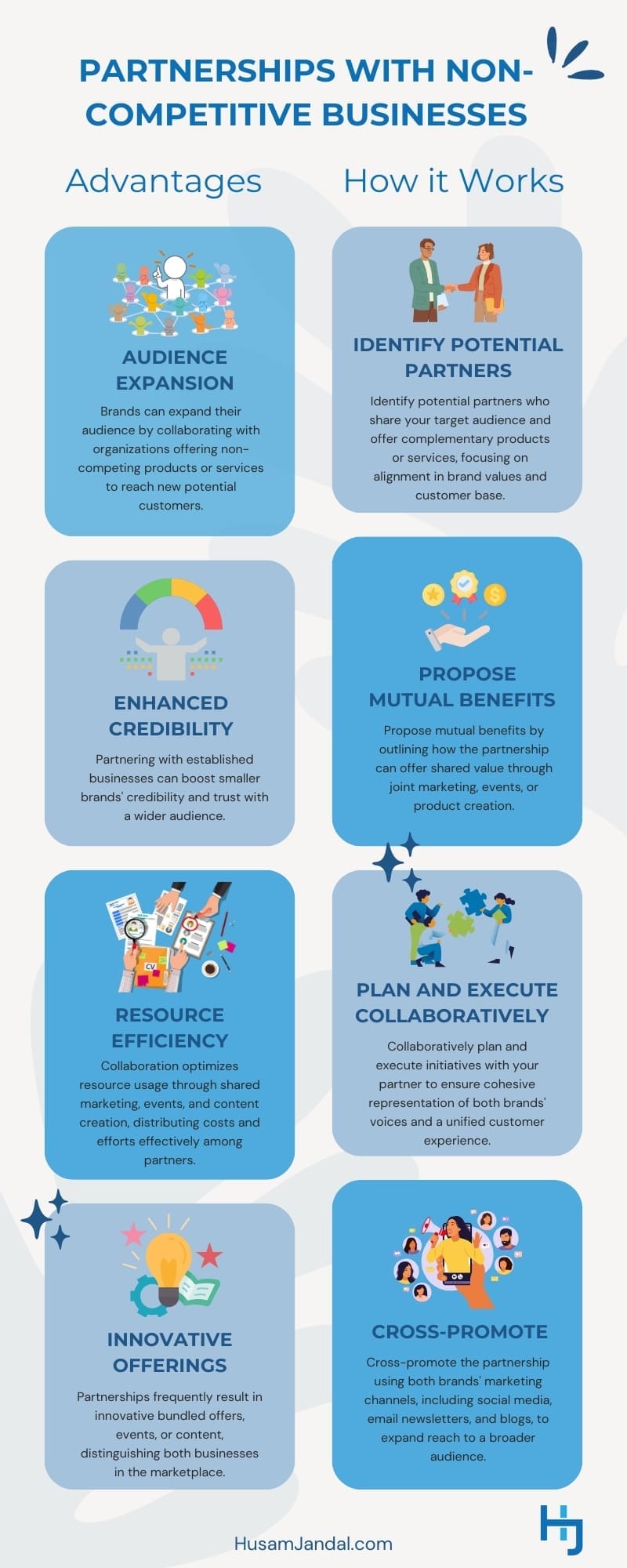 Picture yourself in 2006, launching a new e-commerce platform that competes with Amazon and eBay. The odds are against you. Or, fast-forward to 2013. You’re launching a new business collaboration tool in an industry that giants like Microsoft and Google dominate. You are the underdog. Do you even stand a chance?
Picture yourself in 2006, launching a new e-commerce platform that competes with Amazon and eBay. The odds are against you. Or, fast-forward to 2013. You’re launching a new business collaboration tool in an industry that giants like Microsoft and Google dominate. You are the underdog. Do you even stand a chance?
These aren’t hypothetical companies. They’re real examples of underdogs that went on to thrive despite starting at a significant disadvantage. Rather than accepting their position, they used their size to their advantage. Your business can, too. On this page, I’ll walk you through what it means to have an underdog mentality, the advantages of being the underdog, and actionable strategies that help underdogs make it to the top.
Advantages of Adopting an Underdog Mentality in Business
The underdog mentality in business is a mindset adopted by smaller companies who recognize they’re competing against much larger, more established players in their industry. This mindset is about embracing one’s position as a smaller competitor and using it as a source of motivation and creativity. The underdog mentality drives businesses to challenge the status quo, innovate, and find unique paths to success.
Agility and Flexibility
The underdog mindset makes it easier for you to adapt to market changes and consumer trends more swiftly than larger corporations. This agility allows you to experiment with and implement innovative strategies without the red tape that often slows down more prominent companies.
Personal Connection
Smaller businesses can create more personal, meaningful connections with their customers. By telling your story and emphasizing your underdog status, your business can garner loyalty and support from a community that roots for your success.
This was a crucial component of the 2006 e-commerce platform I mentioned earlier. The pre-launch landing page boasted: “It’s a community where you can share your knowledge and experience with other experts and passionate users to help you stay ahead of the game.” This is something the industry giants weren’t doing, and it paid off big for the underdog. Today, Shopify owns more than a quarter of the market.
Innovation and Creativity

The need to stand out and make the most of limited resources often leads underdogs to be more innovative and creative in their approaches. This can lead to unique products, services, or marketing strategies that larger competitors might overlook or avoid due to perceived risks or a commitment to traditional methods.
This is an area where our second underdog stood out. Rather than simply creating another communication tool, the company focused on what mattered most to its tech-savvy audience: seamless integration with other tools and a strong emphasis on productivity. “Be less busy,” the platform promised. This mantra spoke to its intended user base, and they flocked to it. Today, Slack has over 169,000 paid customers, the company reports.
Cost Efficiency
With typically lower overheads, small businesses can often operate more cost-efficiently than larger companies. This efficiency can allow you to offer competitive pricing, invest in customer service, or allocate resources to underdog marketing tactics that generate a high ROI.
10 Underdog Strategies You Can Use to Outsmart Larger Competitors
Digital marketing offers countless opportunities for underdog brands to punch above their weight, using creativity, surprise, and ingenuity rather than hefty marketing budgets to capture attention. We’ll explore a few options you can try below.
1. Influencer Partnerships on Emerging Platforms
Influencer partnerships on emerging platforms can be a goldmine for smaller brands that want to make a significant impact with a limited budget. Emerging platforms often offer fertile ground for creativity and viral content, thanks to less competition and a more engaged user base eager for fresh content. By partnering with influencers who are growing their presence on these platforms, brands can tap into dedicated communities that larger competitors may not yet have reached or understood.
Think of TikTok before its boom as an example. Many small fashion and beauty brands were early adopters of TikTok, partnering with micro-influencers who created viral makeup tutorials or fashion hauls. These brands capitalized on TikTok’s algorithm, which favors engaging content, helping them to gain visibility among millions of users before the platform became oversaturated with bigger brands.
Advantages of Influencer Partnerships on Emerging Platforms
- Early Adopter Credibility: Brands that utilize emerging platforms gain credibility for being ahead of the curve, appealing to trend-conscious consumers.
- Cost-Effectiveness: Influencers on these platforms may be more affordable than their counterparts on more established platforms, providing a higher ROI for underdog brands.
- Engaged Audiences: New platforms often boast highly engaged user bases, offering a chance for deeper interaction with content and higher conversion rates.
How it Works
- Identify the Right Platform and Influencer: Start by researching which emerging platforms align with your brand’s target audience. Then, look for influencers whose content style, audience demographic, and values align with your brand.
- Collaborate on Creative Content: Work closely with influencers to create content that’s authentic to their style while effectively showcasing your brand. The novelty of the platform can inspire innovative content formats.
- Measure and Adjust: Use the platform’s analytics tools to track the performance of your campaigns. Be ready to pivot or tweak your strategy based on what resonates with the audience.
2. Interactive Social Media Campaigns
Interactive social media campaigns are a dynamic way to engage directly with your audience, encouraging active participation rather than passive consumption. These campaigns can take many forms, including polls, contests, Q&As, interactive stories, and more. These methods are effective because they foster a sense of community and belonging among participants, turning ordinary users into brand advocates.
GoPro, though now a well-known brand, is a great example here. The company leveraged user-generated content brilliantly in its early days to grow its community and continues to do so today. They encourage users to submit their best videos taken with GoPro cameras, with the promise of featuring selected photos on their official social media channels. This not only provides GoPro with a constant stream of authentic content but also engages its user base by giving them a platform to showcase their adventures.
Advantages of Interactive Social Media Campaigns
- Enhanced Engagement: Interactive elements prompt users to spend more time with your content, leading to deeper engagement and a stronger connection to your brand.
- Increased Reach: Interactive campaigns often encourage sharing, tagging, and participation, which can significantly increase the campaign’s reach beyond your existing followers.
- Valuable Insights: The feedback and data gathered from these campaigns can provide valuable insights into your audience’s preferences and behavior.
How it Works
- Plan Your Campaign: Identify your campaign’s goal (e.g., increase brand awareness, launch a new product, gather customer feedback) and decide on the interactive element that best suits this goal.
- Create Engaging Content: The success of interactive campaigns hinges on creating content that is engaging, visually appealing, and easy for participants to interact with.
- Promote Your Campaign: Use all available channels to promote your campaign, ensuring your target audience knows how and why they should participate.
- Engage with Participants: Actively engage with participants by responding to their submissions, comments, and questions to foster a sense of community.
3. Localized SEO Tactics
Localized SEO tactics are crucial for small businesses that want to capture the attention of consumers in specific geographic areas. This approach tailors your brand’s online presence to rank higher in local search queries, making it easier for customers near you to discover your products or services. This approach is particularly effective if your business has physical locations or serves specific local markets.
Advantages of Localized SEO Tactics
- Targeted Visibility: Enhances your visibility to locals who are searching for related products or services, leading to higher conversion rates.
- Competitive Edge: Gives you a competitive advantage over larger brands that might not be optimizing for local search as effectively, as well as over local competitors who haven’t adopted localized SEO strategies.
- Community Connection: Helps build a connection with your local community, fostering brand loyalty and encouraging word-of-mouth recommendations.
How it Works
- Google Business Optimization: Ensure your Google Business listing is accurate, complete, and optimized with relevant categories, descriptions, and high-quality images. Update your profile with posts, offers, and events regularly.
- Local Keywords: Incorporate local keywords (city, neighborhood, landmarks, etc.) into your website’s content, meta descriptions, titles, and URLs.
- Local Content Creation: Publish content that’s relevant to your local audience, such as blog posts about local events, news, or local customer stories, to attract local search traffic.
- Local Link Building: Build links from local businesses, directories, and websites to boost your local search rankings and visibility.
- Online Reviews: Encourage happy customers to leave positive reviews on your listing and other review sites. Respond to all reviews in a constructive manner.
4. Creative Content Formats
Creative content formats allow your brand to break through the noise on digital platforms, offering engaging and unique ways to connect with your audience. By moving beyond traditional blog posts and social media updates, your brand can leverage these formats to tell your story, showcase your products, and engage with your community more meaningfully.
Advantages of Creative Content Formats
- Increased Engagement: Unique content formats can capture attention more effectively, encouraging deeper engagement from audiences.
- Brand Differentiation: By adopting creative content strategies, your brand can set itself apart from competitors, highlighting your innovative spirit and willingness to experiment.
- Enhanced Shareability: Unusual and engaging content is more likely to be shared, increasing your brand’s reach and visibility.
How it Works
- Augmented Reality (AR) Experiences: Use AR filters on social media or apps to create immersive experiences related to your products or brand story.
- Interactive Quizzes and Surveys: Develop quizzes or surveys that not only entertain but also collect insights about your audience’s preferences and behaviors.
- 360-Degree Videos: Showcase products, events, or locations with 360-degree videos that give viewers a comprehensive and immersive view.
- Podcasts: Start a podcast relevant to your industry or community, providing value through interviews, discussions, and insights.
- Infographics and Interactive Data Visualization: Present data and information through visually engaging infographics or interactive visualizations that make complex information accessible.
- Webinars and Online Workshops: Offer in-depth learning experiences that position your brand as an authority in your field.
5. Partnerships with Non-Competitive Businesses

Partnerships with non-competitive businesses are a strategic way for brands to expand their reach, leverage complementary strengths, and offer added value to their respective customer bases. This collaborative approach allows small businesses to pool resources, share audiences, and cross-promote products or services in a way that benefits all parties involved, including the consumers.
Advantages of Partnerships with Non-Competitive Businesses
- Audience Expansion: By partnering with organizations that share a similar audience but offer non-competing products or services, brands can introduce themselves to new potential customers.
- Enhanced Credibility: Aligning with established businesses can lend credibility to smaller brands, helping to build trust with a broader audience.
- Resource Efficiency: Collaboration can lead to shared marketing efforts, events, and content creation, distributing the costs and efforts more efficiently between partners.
- Innovative Offerings: Partnerships often lead to the creation of innovative bundled offers, events, or content that can distinguish both businesses in the marketplace.
How it Works
- Identify Potential Partners: Look for organizations that share your target audience but offer complementary products or services. The key is finding partners whose brand values and customer base align with yours.
- Propose Mutual Benefits: When reaching out to potential partners, present clear ideas on how the partnership can benefit both parties, whether through joint marketing campaigns, shared events, or co-created products.
- Plan and Execute Collaboratively: Work closely with your partner to plan and execute the initiative, ensuring that both brands’ voices are represented and that the collaboration feels cohesive to customers.
- Cross-Promote: Utilize both brands’ marketing channels—social media, email newsletters, blogs, etc.—to promote the partnership and reach a wider audience.
6. Niche Content Marketing
Niche content marketing targets a highly specific segment of a larger market, focusing on unique preferences, needs, or problems that mainstream brands may not address. This approach allows smaller brands to become authorities within a particular niche, attracting a dedicated audience that is very engaged and more likely to become loyal customers.
Advantages of Niche Content Marketing
- Focused Target Audience: By targeting a niche, you can tailor your content more precisely, leading to stronger engagement rates and a deeper connection with your audience.
- Reduced Competition: Operating within a niche reduces the breadth of direct competition, making it easier for your brand to stand out and capture market share.
- Increased Authority: Specializing in a specific area allows your brand to build authority and expertise, making you the go-to source for information or products within that niche.
- Higher Conversion Rates: Audiences within a niche are often more passionate and engaged, leading to higher conversion rates compared to broader markets.
How it Works
- Identify Your Niche: Conduct market research to find a niche that aligns with your brand’s strengths and values and where there is a clear audience need or gap in the market.
- Understand Your Audience: Deeply understand the preferences, pain points, and behaviors of your niche audience. This insight should drive all content creation and marketing efforts.
- Create Tailored Content: Produce content that speaks directly to your niche audience’s interests and needs. This can include blog posts, videos, podcasts, and social media content that address specific topics within your niche.
- Promote Your Content: Use targeted promotion strategies to reach your niche audience where they are most active, whether that’s specific social media platforms, forums, or online communities.
7. Hackathon or Innovation Challenges
Hackathons or innovation challenges are collaborative events where individuals or teams come together to solve specific problems or develop new ideas within a short period of time. Hosting or sponsoring these events can be a strategic way to foster innovation, engage with the community, and enhance your brand’s visibility and reputation in their industry or local area.
Advantages of Hackathons or Innovation Challenges
- Community Engagement: These events create a platform for engaging with the tech community, potential customers, and other stakeholders in a meaningful way.
- Brand Visibility: Sponsoring or hosting a hackathon puts your brand in front of a diverse audience, including participants, spectators, and media.
- Innovation and Problem-Solving: They stimulate creativity and innovation, potentially leading to breakthrough ideas or solutions that the company can further develop.
- Talent Discovery: Hackathons are excellent opportunities for talent spotting, allowing companies to identify and recruit skilled individuals who demonstrate exceptional problem-solving abilities.
How it Works
- Define the Objective: Clearly define what you aim to achieve with the hackathon or innovation challenge, whether it’s solving a specific problem, exploring new technologies, or generating new product ideas.
- Choose a Theme or Problem to Solve: Select a relevant theme or specific problem that aligns with your brand’s expertise or industry. This focus will attract participants who are genuinely interested in the topic and motivated to develop practical solutions.
- Promote the Event: Use social media, community forums, industry networks, and partnerships with educational institutions to promote the event and attract participants with diverse backgrounds and skill sets.
- Provide Resources and Support: Ensure participants have access to the necessary tools, data, and mentorship to tackle the challenge effectively. Consider involving your team members as mentors or judges.
- Celebrate and Utilize Outcomes: Recognize and reward outstanding solutions. Explore ways to integrate successful ideas into your business or support their further development.
8. Remarketing with a Twist
Remarketing with a twist involves creative, unconventional approaches to reconnect with people who have previously interacted with your brand but didn’t convert. Traditional remarketing efforts might focus on straightforward ads urging return visits or highlighting missed purchases. Adding a twist means injecting humor, storytelling, personalization, or interactive elements into these campaigns to grab attention and foster a stronger connection, making your brand memorable.
Advantages of Remarketing with a Twist
- Enhanced Engagement: Creative remarketing strategies stand out in a crowded ad space, engaging users more effectively than standard ads.
- Increased Brand Recall: Unique remarketing efforts are more memorable, helping to increase brand recall and loyalty.
- Improved Conversion Rates: By addressing the reasons for initial hesitation or abandonment with a creative touch, brands can more effectively persuade users to complete a purchase or take another desired action.
How it Works
- Segment Your Audience: Tailor your remarketing efforts by segmenting your audience based on their interaction with your site, such as visitors who abandoned carts, browsed specific product categories, or engaged with content.
- Personalize the Message: Use data from the user’s interaction with your site to personalize the remarketing message, making it relevant and engaging.
- Add a Creative Twist: Incorporate humor, storytelling, or an unexpected element that relates to your brand or the product the user showed interest in. This can range from playful jokes about the abandoned cart to imaginative stories about the product’s journey.
- Test and Optimize: Continuously test different creative approaches to see what resonates best with your audience and refine your strategies based on the data.
9. Email Marketing with Personal Stories
Email marketing with personal stories is a powerful strategy that involves sharing narratives from the brand’s founders, employees, or customers within email campaigns. This approach humanizes the brand, builds a deeper emotional connection with subscribers, and differentiates the brand in a crowded inbox by offering content that is engaging and relatable rather than purely transactional.
Advantages of Email Marketing with Personal Stories
- Enhanced Engagement: Personal stories are more engaging and memorable than standard promotional emails, encouraging readers to spend more time with your content.
- Increased Trust and Loyalty: Sharing personal aspects of your brand and the people behind it builds trust and loyalty with your audience, as people feel a closer connection to your brand.
- Higher Open and Click-Through Rates: Emails that feature interesting stories or insider looks at the brand tend to have stronger open and click-through rates, as they offer value beyond sales pitches.
How it Works
- Identify Stories Worth Sharing: Look for stories within your brand that your audience would find interesting, inspiring, or relatable. This could include the founder’s journey, challenges the company has overcome, behind-the-scenes looks at product creation, or customer success stories.
- Craft Your Narrative: Once you have identified a story, craft your narrative in a way that is authentic and engaging. Use a conversational tone that fits your brand’s voice and personality.
- Incorporate Visuals: Enhance your storytelling with photos, videos, or other visuals that help bring the story to life and add a personal touch to your emails.
- Include a Call to Action: While the primary focus is on storytelling, don’t forget to include a subtle call to action that encourages readers to engage further with your brand, whether that’s browsing your latest collection, reading your blog, or following you on social media.
10. Virtual Events with Unique Experiences
Virtual events with unique experiences offer an innovative way for your brand to engage with the audience, especially when physical events are not feasible. These events transcend typical webinars and meetings by providing interactive, memorable experiences that can range from live performances and workshops to virtual tours and networking sessions. Think of it as an opportunity to showcase creativity, build community, and deepen relationships with customers and prospects.
Advantages of Virtual Events with Unique Experiences
- Wider Reach: Virtual events can attract a global audience, removing geographical and logistical barriers to attendance.
- Increased Engagement: By offering something beyond the standard presentation, your brand can hold its audience’s attention longer and foster greater interaction.
- Brand Differentiation: Creating unique virtual experiences can help your brand stand out in a crowded market, highlighting its values, creativity, and commitment to its audience.
- Data Collection and Insights: Virtual platforms often provide tools to gather data on attendee engagement, preferences, and feedback, offering valuable insights for future marketing strategies.
How it Works
- Define Your Objective and Format: Whether it’s to launch a product, provide education, or simply entertain, your event’s objective should guide its format and content. Think outside the box to incorporate elements that will surprise and engage your audience.
- Choose the Right Technology: Select a platform that supports your event’s interactive elements, whether it’s live polls, Q&A sessions, breakout rooms, or virtual reality experiences.
- Promote Your Event: Utilize social media, email marketing, partnerships, and even paid advertising to spread the word about your event. Emphasize what makes your event unique to attract attendees.
- Engage Your Audience: During the event, actively engage participants through interactive elements, live chats, and real-time feedback opportunities. Follow up post-event with thank-you messages, additional resources, or recordings of the event.
Get Help Implementing Your Underdog Strategy
As a digital marketing consultant with a background in business, I have experience helping all types of businesses, including Fortune 100 companies, reach new heights. However, my true passion lies in helping the underdog. By implementing strategies like those outlined here, I’m able to help smaller businesses grow exponentially and compete with larger, more established companies. If your business is hungry for growth, contact me for a complimentary consultation.




































































